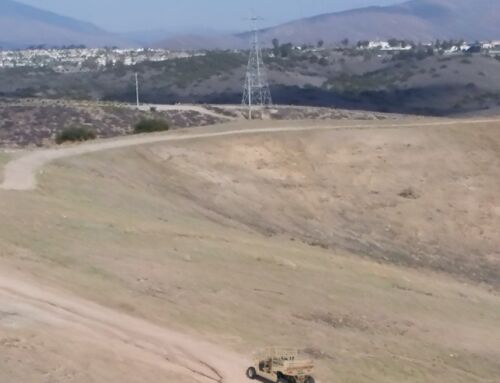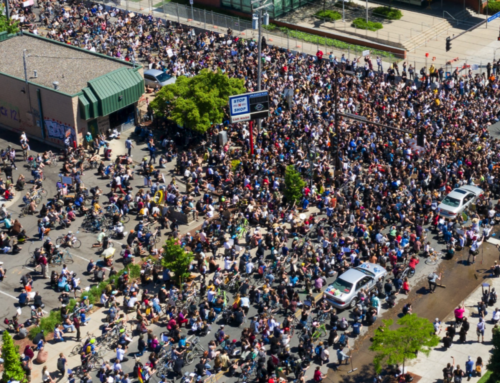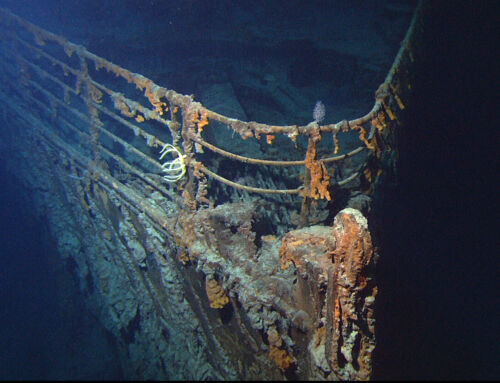Who is operating UAVs today? Often, the military or recreational pilots come to mind first. Yet as drone technology continues to improve, the uses of drones are expanding. One field that has seen a huge recent expansion in the role of drones is environmental monitoring and conservation.
From counting seals to tracking poachers, drones have proved to be an indispensable tool to environmental scientists. Not only are drones much less expensive to use than previous solutions, but they also allow surveillance of heretofore unreachable locations. While the applications are wide and varied, the examples below provide a good overview of how they are being used.
Global Climate Change
Climatologists know that glaciers and sea ice are melting at an alarming rate, but it can be difficult to accurately measure and even more difficult to predict the impact of this melting. There are two factors that make glacial assessment particularly difficult. One is that the existing satellite imagery of glaciers is not of high enough resolution to be useful in taking accurate measurements. Second, glacial environments are harsh and difficult to traverse.
Not only are scientists concerned about climate change itself, but glaciers are a critical source of water for much of Asia. Researchers aren’t yet sure how disappearing ice floes will impact the rivers that they serve. Previous measurements of glacier melt have depended upon drilling stakes in the ice. This is a labor-intensive task and can be nearly impossible in areas with a thick buildup of rock debris.
Using drones, researchers in the Himalayas have been able to monitor glacial melt much more easily, quickly, and accurately. In just two half-day sessions, they were able to get all of the measurements needed to determine glacial melt rates at their research location. They found that comparing high-resolution digital elevation models based on UAV imagery gives them the equivalent of millions of stakes’ worth of data. Moving forward, drones will surely become an invaluable resource to understanding and mitigating climate change.
Wildlife Population Monitoring
In the field of wildlife conservation, it’s critical that researchers know population size and behavior. This can be difficult information to accurately measure for a number of reasons. Animals move, they hide, they hibernate, and they use camouflage to blend into their surroundings. In addition, wildlife can be easily stressed out by humans and generally try to avoid them.
Biologists often use airplanes to fly over populations in order to study them, but this is an expensive endeavor that also causes significant disturbance to populations. Many population biologists have switched to using UAVs to monitor wildlife. The advantages are numerous—less expensive, increased precision, and fewer observer effects to name a few.
When drones are combined with technology like thermal imaging, they can even be used to detect wildlife beneath the tree canopy. Studies have shown that wildlife counts through drone-derived imagery are between 43 percent and 96 percent more accurate than through human-collected ground counts. Drone technology allows humans to aid wildlife populations while preventing harm to the animals, the humans, or the environment itself.
Coastal Habitat Mapping
Besides observing wildlife populations themselves, drones can be an effective way of exploring wildlife habitats. This is especially important in coastal areas. From flood defense to developing shoreline management plans, reliable data for mapping coastal zones is critical. Drones can be used to map coral reefs and assess seagrass beds. They can even assess how seagrass responds to disturbances.
One of the most impressive examples of improved coastal habitat mapping using drones is in North Carolina. Estuaries serve as a nursery to a huge number of fish and shellfish populations, and North Carolina’s estuarine system is the largest and most productive on the East Coast. In part of its mission to protect the estuaries and promote shellfish production, the state’s Division of Marine Fisheries (DMF) maps the benthic (bottom) habitat.
In 2018, the DMF began testing the use of UAVs to conduct coastal mapping. While it used to take two people a day to produce data for ten acres, the drone could produce data for 600 acres in a day. The time difference, not to mention the cost savings (in the millions for this program alone) are astounding. In its assessment, the state reported that it took them 30 years to map the first 90 percent of their estuaries, and it would take them approximately 12.5 days to map the last 10 percent. Based on the results, all of the state’s Department of Environmental Quality divisions are now implementing unmanned aerial system (UAS) plans.
Energy-Production Inspections
Drones have proven to be beneficial in the energy space, particularly when it comes to renewable energy sources. Much of the infrastructure and technology needed for alternative energy production and distribution requires frequent monitoring. What once required total shutdowns or people performing dangerous tasks can now be accomplished with UAVs.
Small drones are able to inspect wind turbines in real time, providing 3D thermal imaging of blades. This eliminates the need for extensive downtime and dangerous manual inspections. UAVs have also been used to supply videos of hydroelectric dam walls as well as help with solar panel installation and inspection.
Drones have made more traditional energy sources more sustainable as well. Due to expense, effort, and downtime, power plant boilers usually get inspected only once a year. A study conducted by Boiler Room Consulting found that by using drones to conduct inspections, expense, effort, and downtime were minimized, allowing for more frequent inspections. More frequent inspections led to problems being detected sooner, resulting in a reduction of CO2 emissions by as much as 649 metric tons per year.
Forestry
There are several ways that drones and drone technology are protecting our forests. One of the most unique mechanisms was developed by BioCarbon Engineering. The first step in this process is the drones surveying specific locations for reforestation. 3D maps of the area allow engineers and ecologists to work together and determine the best species and patterns in which to plant. Next, drones carrying biodegradable seed pods are sent out to do the “planting.”
BioCarbon Engineering has found this method to be 10 times more effective than hand-planting efforts. About 2.5 acres can be planted every 20 minutes. This is another example of drones doing something that would take a prohibitively long amount of time to complete otherwise.
Drones also aid in forestry by detecting forest fires. The Technical University of Madrid created a system that uses drone surveillance and a series of algorithms to automatically detect wildfires. It can be done in real time, providing an early warning system for nearby communities. In the U.S., drones collect information during fires in order to help firefighters predict changes and make the best use of limited resources.
Despite the many ways drones are currently being used for environmental monitoring purposes, the practice is still in its infancy. As drones, cameras, sensors, and other related technologies evolve, it will be exciting to see how their use in conservation, energy production, and ecological studies expands. We’re still just at the tip of the (melting) iceberg.
Are you interested in learning more about how Blue Vigil tethers can improve your aerial drone missions? Please contact us at [email protected].




